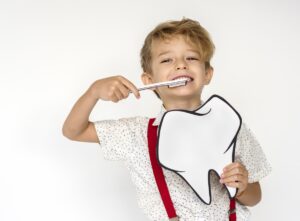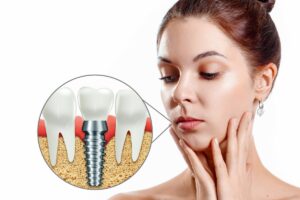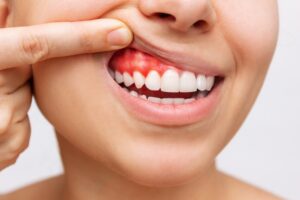Oral and dental health significantly impacts children’s overall health and quality of life. Healthy teeth support both their physical and psychological development. Pediatric dental care is not just about preventing cavities; it also involves establishing proper oral habits, ensuring proper alignment of teeth, and achieving an aesthetically pleasing appearance. This article explores everything from a child’s first dental visit to orthodontic treatment.
The First Dental Visit
A child’s first dental visit should generally occur around the time the first tooth emerges or by their first birthday. This early visit is crucial for establishing proper oral health habits and detecting potential issues early.
Why is it Important?
- Encourages awareness to prevent cavities.
- Helps children overcome any fear of the dentist.
- Monitors the development of teeth and jaw structure.
Key Areas of Focus:
- Preventing baby bottle tooth decay.
- Managing pain and sensitivity during teething.
- Establishing good oral hygiene habits.
The Importance of Primary Teeth
Although temporary, primary teeth (baby teeth) play a critical role in guiding the permanent teeth into proper alignment. Decayed or lost primary teeth can negatively impact the emergence of permanent teeth, leading to misalignment issues.
Functions of Primary Teeth:
- Support chewing and speech development.
- Act as space holders for permanent teeth.
- Provide aesthetic benefits and boost the child’s self-confidence.
Regular check-ups of primary teeth are vital for preventing decay and ensuring their preservation. Protecting your child’s baby teeth can reduce the risk of orthodontic problems later in life.
Prioritizing Oral Hygiene in Children
Teaching children proper brushing habits is fundamental to maintaining oral health. Brushing should start under parental supervision as soon as the first tooth erupts.
Basic Steps for Oral Hygiene:
- Brushing Teeth: Brush twice a day with a fluoride toothpaste. Use soft-bristled toothbrushes specifically designed for children.
- Flossing: Introduce dental floss according to the child’s age and dental structure.
- Healthy Diet: Limit sugary and acidic foods. Sticky and hard candies can especially harm children’s teeth.
- Routine Check-ups: Schedule dental check-ups every six months for cleaning and cavity detection.
Making oral care enjoyable with colorful brushes or brushing timers can encourage children to stick to these habits. Parents brushing their teeth alongside their kids can also serve as a great example.
Early Detection of Orthodontic Issues
Orthodontics focuses on the proper alignment of teeth and the development of the jaw. Orthodontic evaluation is usually recommended around the ages of 6–7, and early treatment can prevent more severe issues in the future.
When is Orthodontic Treatment Necessary?
- Habits like thumb-sucking or tongue-thrusting that cause misalignment.
- Jaw misalignment between the upper and lower arches.
- Crowded teeth or excessive spacing.
Treatment Process:
- Early appliances may correct jaw structure.
- Fixed or removable braces can be used if necessary.
Orthodontic evaluations allow for detailed monitoring of jaw growth and tooth alignment. Early treatment can often prevent the need for more complex interventions later.
Cavities in Children and Preventive Measures
Dental cavities are among the most common oral health issues in children. However, preventive treatments can effectively combat this problem.
Preventive Methods:
- Sealants: A protective layer applied to the chewing surfaces of molars to prevent cavities.
- Fluoride Application: Strengthens enamel and prevents decay.
Parents should stay informed about these treatments and ensure regular dental visits to monitor their child’s dental health. Preventive care lays the foundation for lifelong healthy teeth.
Dental Trauma: Emergency Situations
Children may experience dental injuries due to falls or accidents. Quick and appropriate action can often save the affected tooth.
What to Do:
- If a tooth is knocked out, keep it moist in milk or saliva and visit a dentist immediately.
- If the tooth is broken, collect the pieces and bring them to the dentist.
Dental injuries often occur during play or sports. Encourage your child to use protective gear to minimize the risk of dental trauma.
Protecting Your Child’s Dental Health
Maintaining children’s oral and dental health involves regular dental visits and instilling healthy habits. Early diagnosis and preventive treatments ensure your child’s bright and healthy smile. Additionally, educational books and games can help raise awareness about oral hygiene and motivate children to take care of their teeth.
Don’t Forget to Follow Us on Instagram!





